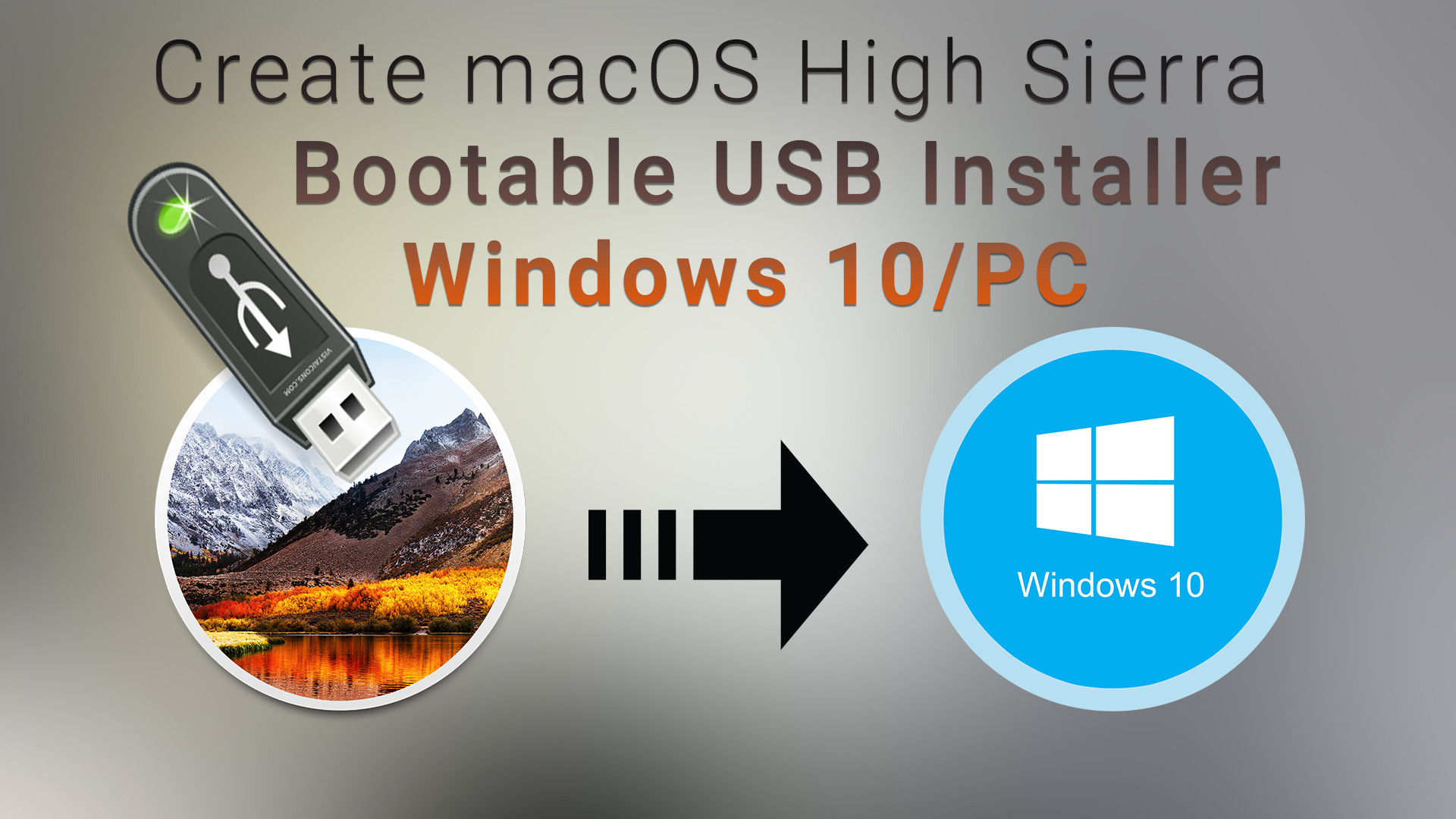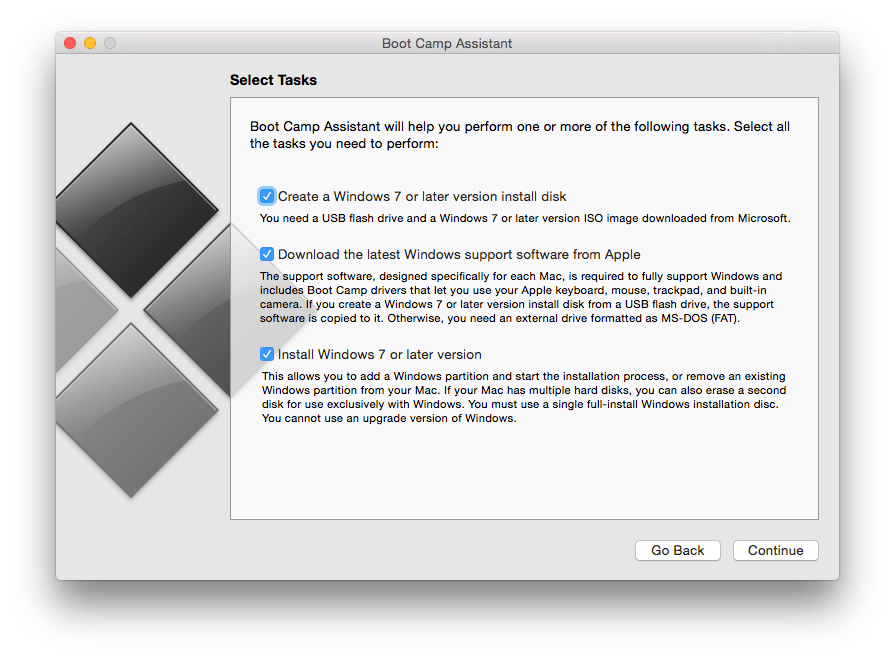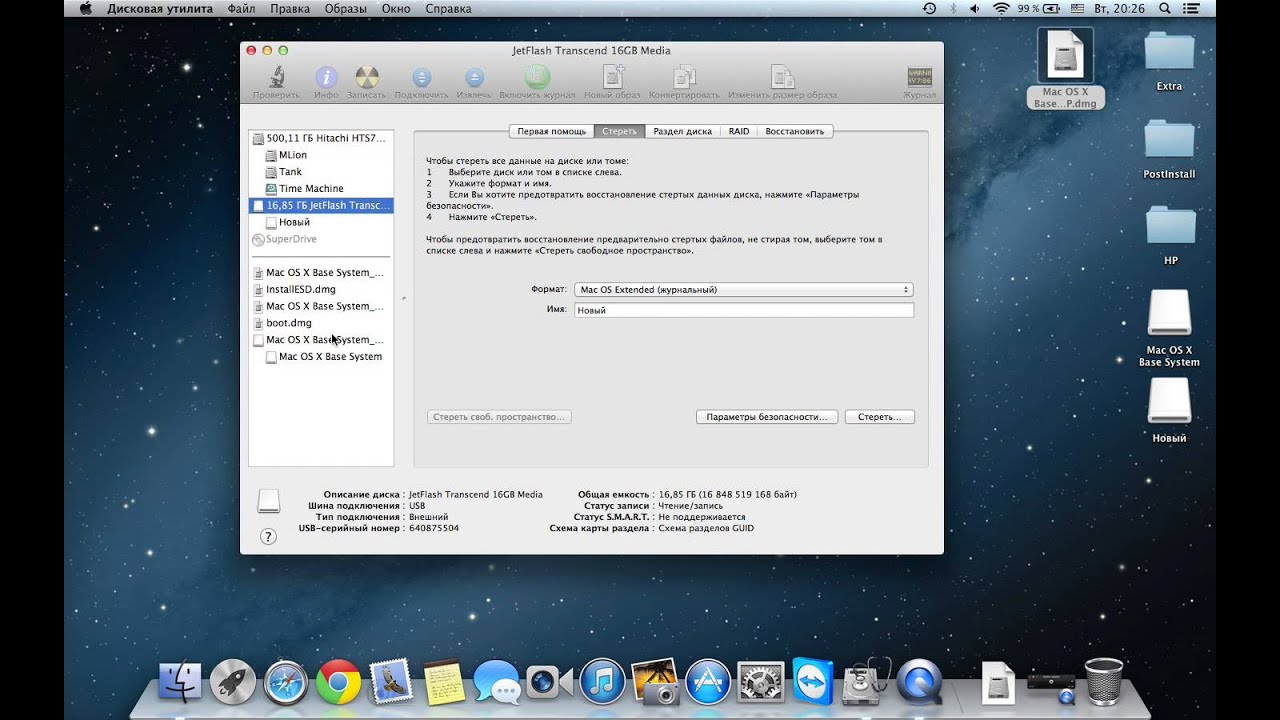Mac Os X Yosemite Bootable Usb Download
- Macbook Pro Os Download Usb
- Mac Os X Yosemite Price
- Mac Os X Yosemite Bootable Usb Download Windows 10
OS X Yosemite bootable USB. Step 1: First step is to download OS X Yosemite installation file. The download size is about 5.2 GB and can be downloaded by following the instructions in our how to download OS X Yosemite guide. Step 2: Next step is to download and install DiskMaker X app. If you open the new bootable drive in the Finder, you'll notice that it appears empty, other than the Install OS X Yosemite app. The boot files are hidden, and the installer app allows you to upgrade without booting from the drive if you don't need to. Step 6: Now, reboot, load with flash to make Mac OS X installation. Step 7: When installation gets complete, reboot again with the USB stick or DVD, but choose a boot menu section with a freshly installed Mac OS X Yosemite. Step 8: Now, after download completes successfully - install the boot loader and the necessary kekstov.
If you’re still using a Mac OS X the time will come when your computer won’t boot, or a problem may arise where you can’t take control of the device, and booting from an OS X installation media will be required.
- Oct 19, 2014 The instructions I found that worked, using Disk Utility, were located at How to Make a Bootable OS X Mavericks USB Install Drive and How to Create a Bootable Install USB Drive of Mac OS X 10.10 Yosemite. Download the Mac OS X 10.10 Yosemite. First, download the latest Mac OS X version, which is 10.10 Yosemite.
- Enjoy OS X Yosemite on your bootable external drive! For those wondering, in creating this walkthrough I installed Yosemite and ran it off of a fairly generic ‘fast’ USB thumb drive. While performance is sufficient to get a feel of the general changes and appearance, the overall experience is tremendously slow when compared to running OS X.
Mac OS X Snow Leopard 10.6 ISO Download. It's latest bootable image file for iMac, MacBook (Mini, Pro), Xserve, and Mac Pro. Clean and tested. Mac OS Installer retail Version of Yosemite, El Capitan or Mac OS Sierra, choose one you desire to make the bootable USB. To get Mac OS X InstallerApps you can ask help from a friend who has “ real Macintosh” to download it from the App Store. But to install or reinstall a recent version of OS X, you must either download a non-bootable installer from the Mac App Store or (via OS X’s invisible, bootable recovery partition) download 6GB.
This is why it’s recommended that you make a Mac OS X bootable USB when your Mac is in working conditions. However, if you find yourself on a scenario where your device (iMac, MacBook Pro, Air, Mac Pro or Mini) is not responding and you happen to have a Windows 10 device, then you can still be able to make a USB bootable installation media for your Mac OS X to reinstall the operating system using the Recovery Assistant.
These instructions will also work for Windows users who are running Mac OS X on a virtual machine and need to upgrade to the latest version. For instance, to OS X Yosemite.
Requirements
- Image via arstechnica.net Step 4: Drag your USB (or a Dual-Layer DVD) drive from the list on the left into the 'Destination' box and click 'Restore' (or just click the 'Burn' button in the upper left if you're using a Dual-Layer DVD) and in 10-30 minutes (depending on whether you're using USB 2.0 or 3.0) you'll have your backup disk ready to instal on as many Macs as you like.
- Therefore, you can create bootable USB for your Mac using Transmac on windows 10/7/8/8.1 here you will learn the easiest method of creating bootable USB. As you know that Mac OS EL Capitan is the newest version among Mac. In here just follow my steps to create a bootable USB installer for your Mac. Is the twelfth major of the Mac operating system.
Before you dive into this guide, you’ll need a few things:

- A broken Mac computer with Mac OS X.
- A trial copy of the TransMac software.
- One high quality USB flash drive with 16GB of storage.
- A copy of Apple’s macOS (DMG file).
Now that you have all the necessary ingredients, you’re ready to make a Mac OS X bootable USB using the DMG file of the operating system with the steps below.
Create Mac OS X bootable USB installation media
Before you can use TransMac, you first need to partition your USB flash drive with a GPT partition, as a normal MBR partition may not work. Appcleaner mac app store. To do this, you’ll need to use the Diskpart command-line utility on Windows 10.
Setting up GPT partition
Use these steps to set up a USB drive with a GPT partition:
Open Start on Windows 10.
Search for Command Prompt, right-click the top result and select the Run as Administrator option.
Type the following command to open Diskpart and press Enter:
Type the following command to determine the USB flash drive and press Enter:
Type the following command to select the storage and press Enter:
Quick tip: Theselect disk 1command as an example, but you have to replace 1 with the number of the flash drive you want to use.Type the following commands to delete everything from the USB thumb drive and press Enter:
Type the following command to convert the drive into a GPT partition and press Enter:
Type the following command to select the new partition and press Enter:
After you complete the steps, the USB flash drive from MBR to GPT format, you can use the steps below to create a bootable USB installation media to install Mac OS X.
Create USB install media
Use these steps to create a bootable media to install Mac OS X:
Download and install a copy of TransMac.
Quick note: TransMac is a paid software, but it has a 15-day trial solution, that give us more than enough time to move the DMG files to the USB drive from Windows. (If you want to support the developer, you can purchase the full version.)Insert the USB drive that you’ll use to fix your installation of OS X. (Remember that all the data in the USB will be erased. Tone2 icarus vst free. Make sure you take off any important documents.)
Right-click the TransMac software icon and Run as administrator. (You’ll be prompted to Enter Key or Run, because we’ll be using it once, click the Run option.)
On the left pane, you’ll see all the Windows PC drives listed, right-click the USB drive that you’re intending to use to reinstall Apple’s OS X and select the Restore with Disk Image option.
In the warning dialog box, click the Yes button.
Use the Restore Disk Image to Drive dialog box to browse for the DMG file with the installation files for Mac OS X Yosemite in this case, and click the OK button to create a bootable USB of the operating system.
Now, you’ll have to wait a long time. No kidding. It could take one or two hours to complete the process depending on your computer and other variables.
Once your bootable USB installation media is ready, remove it and insert it into your Mac, power it on, holding down the Option key, and select the USB you just created to reinstall Mac OS X.
Macbook Pro Os Download Usb


If you’re having issues trying to create a bootable media, you can get a USB flash drive that comes with Mac OSX ready to install.
In this article, I will show you How to create Bootable USB for Mac OS El Capitan on Windows using Transmac. Therefore, you can create bootable USB for your Mac using Transmac on windows 10/7/8/8.1 here you will learn the easiest method of creating bootable USB. As you know that Mac OS EL Capitan is the newest version among Mac. In here just follow my steps to create a bootable USB installer for your Mac. is the twelfth major of the Mac operating system. Therefore, it has outstanding features that the previous version of Mac doesn’t have that. It is better now that we should create a bootable USB installer drive to install Mac OS.
You all have the information about “Transmac” software about its function that how it works, or how to download “TransMac” and how to install that on your Windows PC? However, you need the following requirements to create a great bootable USB installer for Mac OS El Capitan.
Why we use TransMac to Create bootable USB for mac os el Capitan?
TransMac is a simple application to open hard drives disk, Flash drives, CD/DVD high-density floppy disk on Windows 10/7/8/8.1 or lower version of other Windows. to use this application you just need to insert the drive you need, and one of the great function is this that it will automatically read the drives, TransMac is a great tool that you can access the Mac file on Windows operating system using TransMac.
TransMac Features
- You are allowed to use the TransMac for 15 days trial, and after that, if you want to use that more then 15 days then you need to purchase that. All the features are the same for Mac.
- The system requirements are you need Windows 10/7/8/8.1 or Windows Vista and XP.
- The users can buy TransMac for $59.00 with the license.
- Apple files system (APFS) are only supported.
- Open Mac APFS/HFS/HFS+ format disk drives, flash drives, CD/DVD/Blu-ray media, HD floppies, dmg, dmg part, sparse bundle, and sparseimage files.
- Copy files to Mac and image file
- Format HFS to Mac
- Save and restore image files to disk and USB flash.
- Create, compress image files for Mac
- Burn your ISO file and dmg file directly to CD/DVD Blu-ray.
- View the partition layout
Now Create bootable USB for Mac OS El Capitan on Windows
Now it is the time to create a bootable USB installer using TransMac, To install Mac OS El Capitan on VirtualBox on Windows 10 you need a Bootable USB here you will learn the steps of creating a bootable USB installer for Mac OS El Capitan on Windows.
Step #1. Before going to create a bootable USB for Mac OS El Capitan you need to download TransMac. Therefore, you can download TransMac from the given link. After that, you are download TransMac now install that on your computer, the installation process is too much easy everyone can install that on their PC/Computer with a simple procedure. Just click on the setup file and with some click, the installation will finish. After that, Launch TransMac when TransMac is launched you will see the list of Flash drives or local disk. Then Right-click on that flash you want to create bootable USB for Mac OS El Capitan then select Restore with Disk Image.
Restore with the Disk image
Step #2. Now a warning message will pop-up after you select Restore with Disk Image, and in this step, select Yes.
Download Mac Os X Lion On Bootable Usb
Step #3. After that, you clicked on yes now a dialogue box will come just click on that and browse for VMDK file and select the file and click Open.
select Mac OS EL Capitan VMDK file
Step #4. After that, you clicked on Open in here your file will be ready to copy on USB drive click on “OK”.
Copying your File VMDK file to USB

Step #5. After that, you clicked OK now in this step, your Mac OS EL Capitan VMDK file will copy to your USB drive. Have patience and wait for some minutes that should copy your file.
Download Mac Os X Lion Bootable Usb
Copying Mac OS EL Capitan File to USB
Mac Os X Usb Bootable Iso Download
Conclusion
Mac Os X Download Bootable Usb Installer
That’s all about it,Now you are totally done with creating the USB drive. Therefore, if you faced any problem regarding this you can comment on below comment box and share your ideas. Furthermore, we will discuss that and don’t forget to subscribe our website with your email address and have a notification about our latest post.
By Michael Argentini
Managing Partner, Technology and Design
How do you erase your Mac hard drive and install OS X Yosemite without a startup disk? Normally the answer would be to boot into recovery mode. But what if you need to partition the hard drive, wiping the recovery partition? You need a bootable OS X Yosemite installer. Here's how to make one using Apple's built-in boot drive creation tool.
What You Need
- The 5GB OS X Yosemite installer app that downloads into your Applications folder when you first install it via the Mac App Store. The file name is Install OS X Yosemite. After you upgrade to Yosemite, this file is deleted. So you have to quit the installer once it appears in order to keep this file.
- A flash drive, external hard disk, SD card, or the like, with at least 8GB of capacity.
- Your Mac user account must be an Administrator. If it isn't, go to Users & Groups in System Preferences and assign Administrator to your user account. You can change it back to a standard user when you're finished. You can also sign in to your Mac as the administrator to create the bootable drive.
Step 1: Format Your Drive
First, you must partition and erase the drive so that it can be bootable. To do this, launch Disk Utility and choose the destination drive in the drive list (left column). On the right, in the Erase tab, choose to format the drive as Mac OS Extended (Journaled). These are the defaults, so just confirm the settings.
Next go to the Partition tab and under Partition Layout choose '1 Partition' in the dropdown menu. Change the name from 'Untitled 1' to 'Untitled'. This is so that the Terminal command below will find the drive. Once the process is complete, the drive name will be 'Install OS X Yosemite'.
Click the 'Options' button. In the dialog that appears, choose 'GUID Partition Table' as the partition scheme, then click 'OK'. Again, this is the default, so just confirm the setting.
Finally, click 'Apply' to confirm the settings and prepare the drive.
Step 2: Make the Drive a Yosemite Boot Installer
In a single command you'll create the bootable install drive. Pretty sweet! To do this, launch Terminal and enter the following command. Note, this assumes that you haven't moved the installer out of your Applications folder. If you have, simply replace '/Applications' with the location of the installer:
The sudo command will ask for your password. As you type it will not appear. This is normal. Just enter it and press return to create the boot drive.
During installation, you'll see a progression of status messages.
Mac Os X Yosemite Price
Wait until you see a status of 'Done.' When you do, you can safely eject the drive and quit Terminal.
Step 3: Start Up from the Install Drive
If you open the new bootable drive in the Finder, you'll notice that it appears empty, other than the Install OS X Yosemite app. No worries. The boot files are hidden, and the installer app allows you to upgrade without booting from the drive if you don't need to.

Mac Os X Yosemite Bootable Usb Download Windows 10
To boot from this new installer, shut down the Mac, plug in the bootable drive, and hold down the option key while powering back up. You should eventually see a series of bootable drives. Click on the one named 'Install OS X Yosemite' and press the return key.